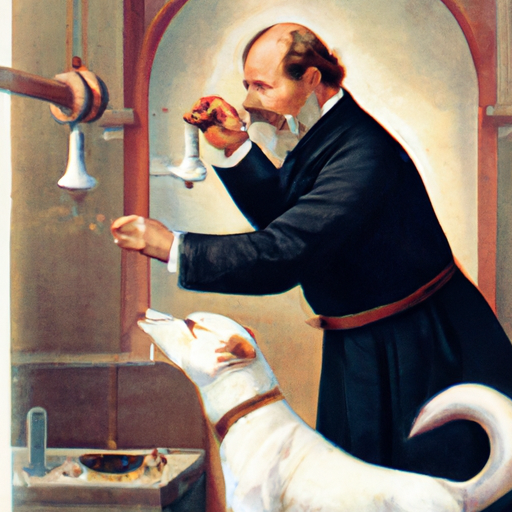Understanding Pavlov’s Experiment
You might have heard about the famous scientist, Ivan Pavlov, and his experiment with dogs. But you might be wondering, what was the main point of this experiment? Well, let’s break it down together.
Pavlov’s experiment was centered around a simple yet revolutionary idea: classical conditioning. This is the process where a stimulus that initially produces no specific response is associated with another stimulus that does. Over time, the first stimulus comes to elicit the same response as the second.
In Pavlov’s case, the first stimulus was a bell sound, and the second was food. Initially, the dogs didn’t respond to the bell, but they did salivate at the sight of food. After repeatedly hearing the bell right before receiving food, the dogs started to salivate merely at the sound of the bell, even when food wasn’t presented. This demonstrated classical conditioning.
The Significance of Pavlov’s Experiment
You might be thinking, okay, that’s interesting, but what’s the significance? Well, Pavlov’s experiment had a profound impact on psychology and learning theory.
- Understanding Human Behavior: Pavlov’s experiment helped us understand how learning and behavior work, not just in dogs, but in humans as well. It revealed that our behaviors could be conditioned by our environments.
- Foundation of Behavior Therapy: The insights from Pavlov’s experiment laid the groundwork for behavior therapy, a form of therapy that aims to change unhealthy or harmful behaviors.
- Impact on Education: The principles of classical conditioning are also used in educational settings to encourage positive behaviors and discourage negative ones.
Pavlov’s Experiment and Caregiving
As a caregiver, you might be wondering how Pavlov’s experiment relates to your role. The principles of classical conditioning can be applied in various ways:
- Creating Routines: Just as Pavlov’s dogs associated the bell with food, individuals can associate certain actions with specific times or events, making routines easier to establish.
- Behavior Modification: Understanding classical conditioning can help you encourage positive behaviors and discourage negative ones.
- Managing Anxiety and Stress: Classical conditioning can also be used to help manage anxiety and stress. For instance, associating a calming activity or object with stressful situations can help alleviate anxiety over time.
Debunking Misconceptions About Pavlov’s Experiment
Despite its significance, there are several misconceptions about Pavlov’s experiment. Here are few you might have heard:
- Pavlov Used a Bell: This is a common simplification. In fact, Pavlov used a variety of stimuli, including metronomes, whistles, and electric shocks.
- Pavlov’s Experiment Was Cruel: While animal welfare standards were different in Pavlov’s time, his experiments weren’t considered cruel by the standards of the day. He received a Nobel Prize for his work in 1904.
Frequently Asked Questions
Q: Did Pavlov only use dogs in his experiments?
A: While Pavlov is most famous for his experiments with dogs, he also experimented with other animals, including cats and rabbits.
Q: What is the difference between classical conditioning and operant conditioning?
A: Classical conditioning involves associating an involuntary response and a stimulus, while operant conditioning is about associating a voluntary behavior and a consequence.
Q: Can classical conditioning be used to get rid of phobias?
A: Yes, classical conditioning is often used in therapy to help individuals unlearn phobias and anxiety disorders.
Q: How does classical conditioning apply to real-life situations?
A: Classical conditioning can explain various real-life phenomena, like why we might feel hungry when we see our favorite restaurant or why a certain song might make us feel happy or sad.
Understanding Pavlov’s experiment can give you a deeper understanding of human behavior and learning, empowering you in your role as a caregiver. Remember, every bell rings with an opportunity to learn.



